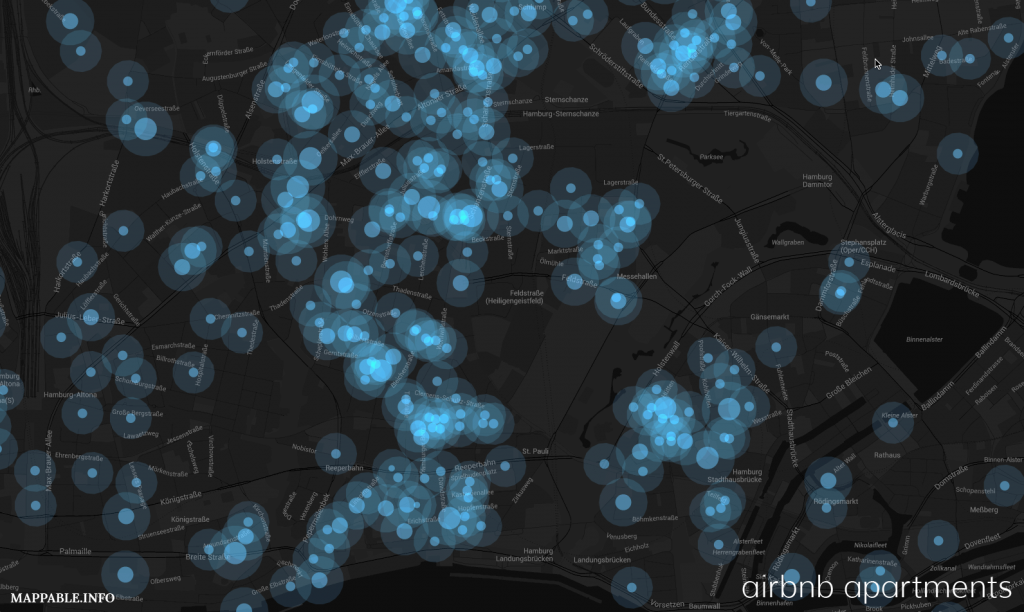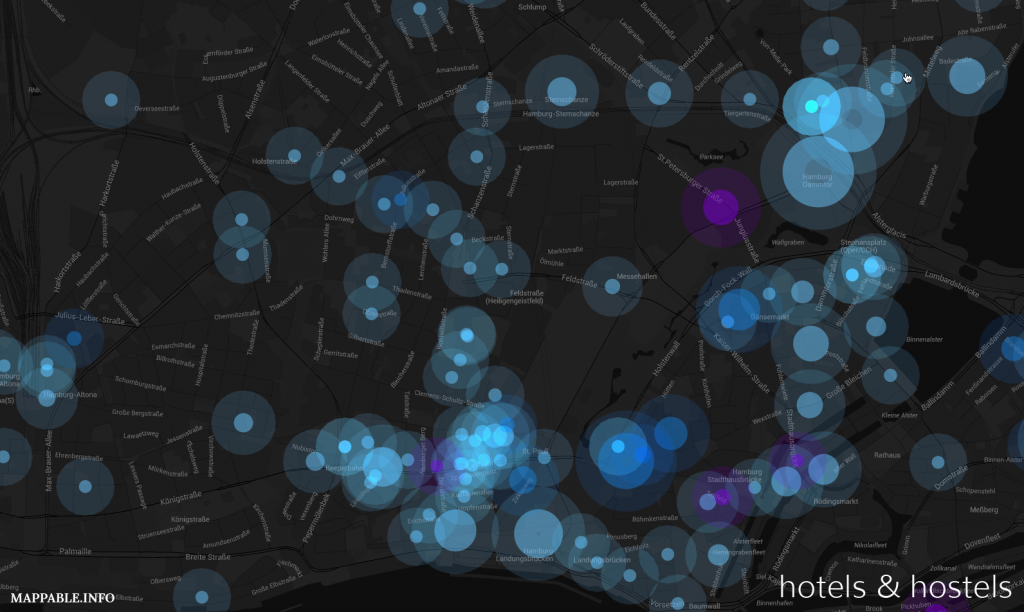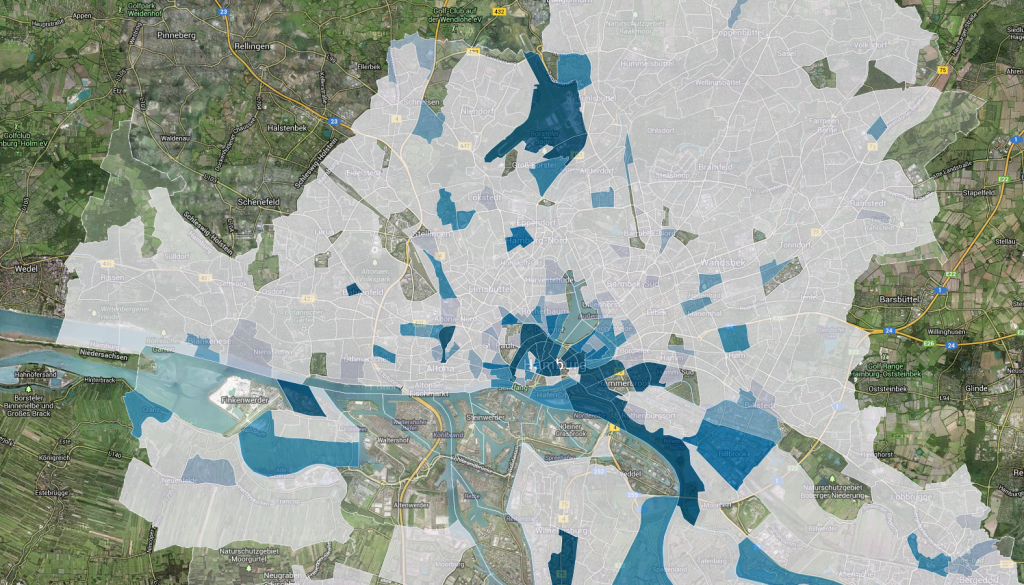So far, our mapping tourism project visualized the spatial patterns of tourism in Hamburg by showing all hotels & hostels. But even when we only look at the places where tourists stay, this view is incomplete. Holiday rental accommodations and camp sites for example could also be considered – and of course there are online marketplaces / community platforms like airbnb. They bring together hosts and guests and thereby offer a completely new way to explore a destination. Having stayed in great airbnb apartments in Switzerland and China, meeting wonderful people, I’m personally a big fan of this concept.
At the same time the hotel business is not amused about their new competitor. Whereas around 1,000 accommodations with a capacity of approx. 2,500 beds is a quite moderate number compared to more than 50,000 hotel beds in Hamburg, the situation in other cities (e.g. Barcelona with more than 11,000 airbnb listings) is different.
But how about the direct comparison: patterns of hotels vs. pattern of airbnb accommodations?
Let’s take a closer look (this time working with the same map style in both cases) at Hamburg’s most touristy areas.
- The Reeperbahn (bottom centre of the image) is Hamburg’s famous amusement district. It offers a wide range of bars & clubs, hosts the red light district and seems to offer a concentration of hotels as well as airbnb accommodations.
- Totally different is the situation at Sternschanze (top centre of the image, use the arrows to change between the two images). The close-by neighborhood is a residential area which in recent years more and more developed into a tourist destination with a huge variety of bars, restaurants and fashion stores. While there are hardly any hotels to be found, there’s a strong agglomeration of airbnb accommodations.
In our opinion this distribution can be explained by the following:
- Sternschanze is Hamburg’s ‘hipster district’. It’s only logic that we see the highest agglomeration of airbnb listings in an area that’s especially popular with young people that frequently use social networks and the like.
- A system like airbnb can easily adopt to changing preferences of tourists (to be more precise, it’s of course not airbnb itself that acts, but the collectivity of apartment host). Providers like airbnb thus benefit from an accommodation demand gap in quarters with limited space for new building projects whereas tourists benefit from the adaptability of these platforms.


